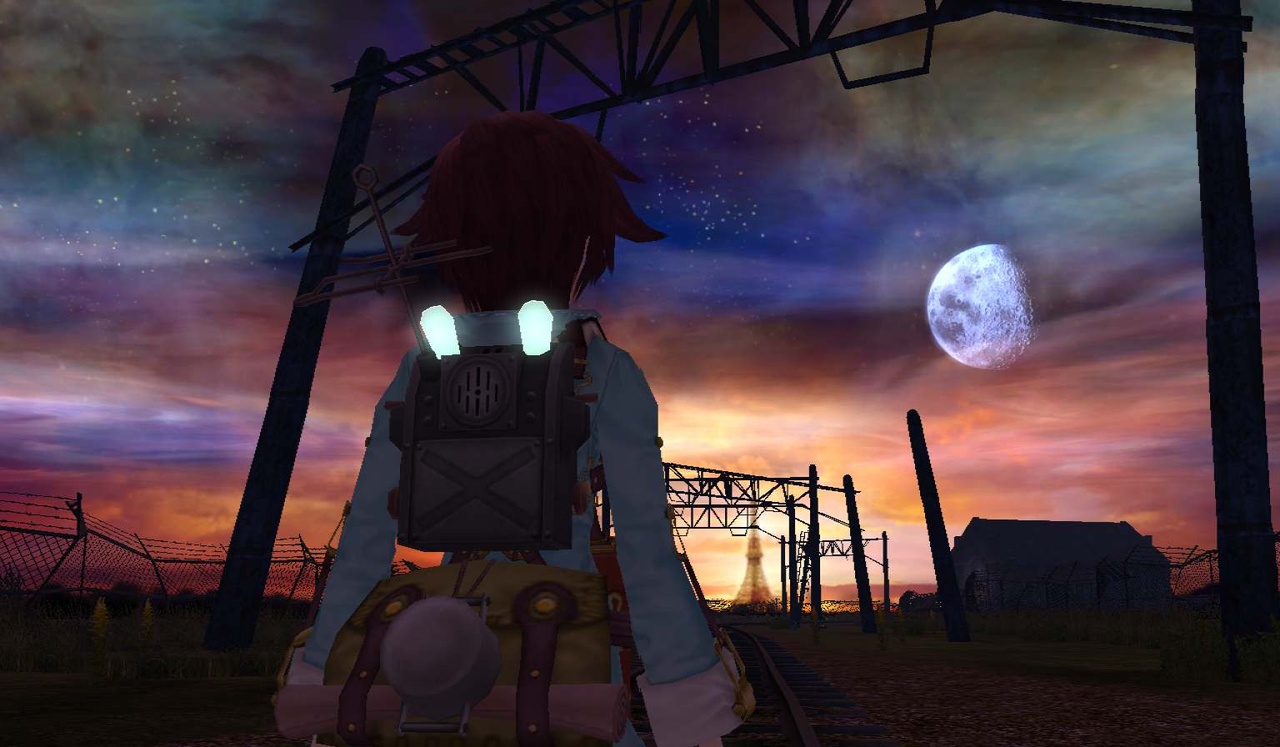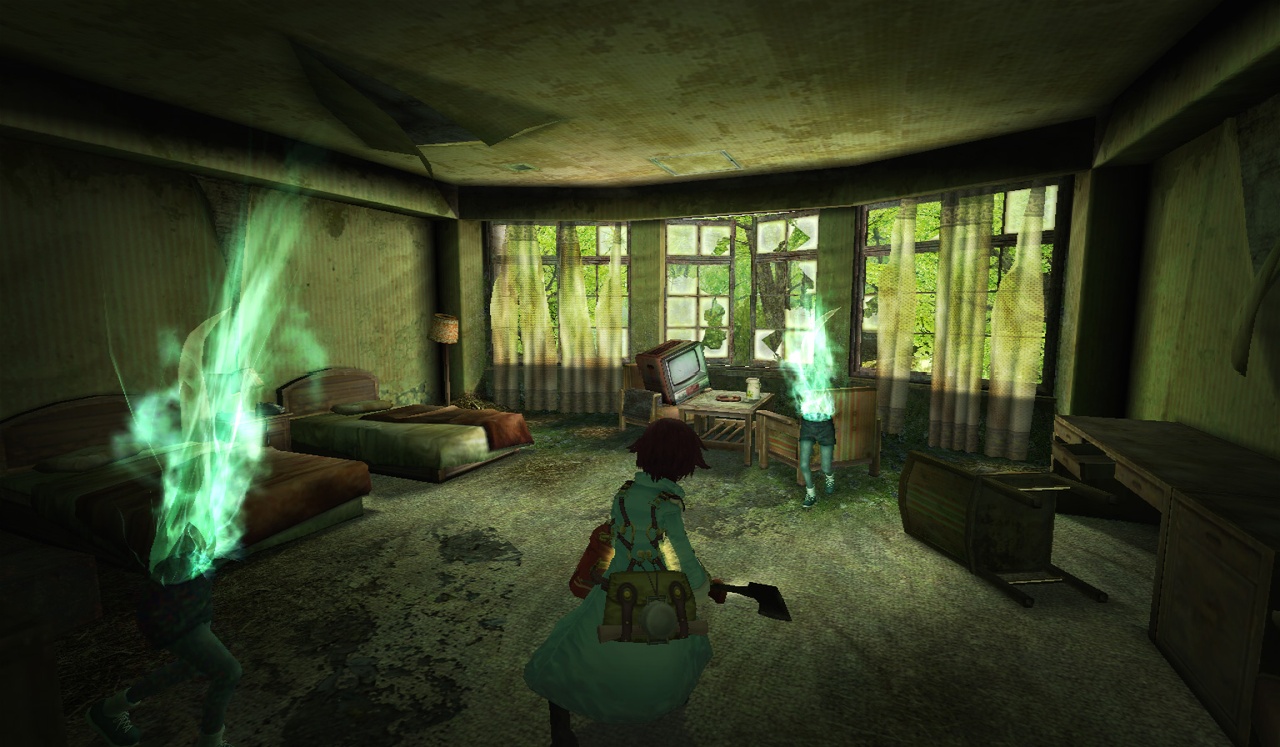Have you ever imagined how it would feel to be entirely alone in the world? To wander through eerily empty shopping malls and subway stations that were once filled with bustling crowds, hearing only your own footsteps? That haunting prospect is a reality for Seto, the young man whose story you experience in Fragile Dreams: Farewell Ruins of the Moon. And the game conjures an overwhelming sense of loneliness and isolation so effectively that you'll find yourself deeply caught up in his journey. Awkward combat and one particularly long, dull leg of Seto's quest prevent Fragile Dreams from being the entirely magical experience it approaches at times. But the stronger aspects shine through in spite of these flaws, making this a powerfully absorbing adventure, albeit one that sometimes tries your patience.

Some sort of mysterious catastrophe has seemingly wiped out much of the world's population. Young Seto has lived his entire life in an observatory, knowing nobody except the secretive old man who raised him. But when his caretaker dies, the 15-year-old Seto sets out in the hopes of finding that he's not actually alone in the world. It's not long before he happens upon a girl with silver hair, but she vanishes almost immediately. Seto then becomes determined to find this mysterious girl again. On his quest, he's befriended by a small assortment of companions, including a talking machine he straps to his back and the brash ghost of a young woman. Seto finds comfort in these companions but never stops seeking a more real, human connection. The story isn't tightly plotted, feeling at times more like a dream sequence than a literal narrative, and it leaves many questions unanswered in the end. But its power is in its emotional weight and in the themes that it so compellingly explores.
Crucial to that emotional impact are the atmosphere and the pervasive sense of loneliness that run through the game. You move Seto through the dark and eerie environments with the nunchuk's thumbstick, using the remote to shine your flashlight around in a way that will feel immediately familiar to anyone who played Silent Hill: Shattered Memories on the Wii. Advertisements and artwork adorn many walls, and this evidence of the now-vanished city crowds only deepens the sense of loneliness. Seto will also frequently find objects lying about that, when examined, communicate to him memories of the people to whom they belonged. These memories are accompanied by sometimes striking images and range from humorous to heartbreaking. Many of the people who left these objects behind seemed to know that their time was ending, and the stories they tell raise challenging questions: Is there any value in happiness today when the world must end tomorrow? All of these elements--the environments, the memory objects--come together to create a consistent sense of melancholy and yearning.

Alas, not every aspect of the game is quite so captivating. Seto's progress is constantly being impeded by spectral enemies who take all sorts of disturbing forms. But while the sight of these spirits may unsettle you at first, you'll quickly learn that combat is so basic and so awkward that you'll be more likely to react with a roll of the eyes than a quickening of the heart when a pack of ghost dogs fades into view. You generally defeat enemies by simply walking up to them and hitting A repeatedly, making Seto whack them or stab them with his current weapon. You have no defensive or evasive moves available, so your only chance of avoiding damage is to step away from an enemy when it's about to attack or hope that your attacks kill it before it gets a chance to attack you. Making matters more troublesome is that much of your fighting is done in narrow corridors, and without a way to lock on to enemies, you're left to rotate the camera to try to get a good look at your targets, which is difficult to do when they're very close to you. At a certain point, you start acquiring ranged weapons, which feel a bit better, letting you aim and fire from a first-person perspective. But across the board, the combat is tedious, and when you die, it often feels like Seto's stiff, limited movements are to blame.
All that combat takes its toll on your weapons, which constantly break on you. You can buy replacements from the outlandish merchant who often shows up at the bonfires that serve as your save points. But while you can stockpile spare weapons galore in your briefcase, you can add or remove items only while at a bonfire. Your on-hand inventory space is limited, requiring you to carefully decide which weapons and healing items you want to carry with you. You have to consider the potential need for spare weapons while setting aside enough empty space for any valuable items you may stumble upon. Rearranging and rotating objects occasionally to try to make room in your inventory for a new item you want to take with you can be an absorbing distraction, but because your weapons break so often, you are forced to spend a lot more time in inventory screens than you would like.
Seto's journey starts strong, with subway stations, amusement parks, and hotels filled with the sorts of poignant details that pull you into the world, but it loses momentum for a while in the second half. There's a long stretch of the game where you're making your way through drab industrial facilities. Here, you sometimes find yourself climbing ladders or walking down hallways that go on for so long that you may begin to doubt there's an end to them. By this point, you feel a sense of solidarity with Seto, and these oppressive environments may motivate you to press on and complete your quest. Thankfully there is one final, interesting location waiting for you to explore on the other side of this rather bland leg of the adventure, redeeming your efforts.

Fragile Dreams is lovely to behold. The anime-influenced appearance of the characters is a perfect fit for the mood of the story, with Seto's big, sensitive eyes conveying depths of emotion. But it's the attention to detail in the environments that makes Fragile Dreams so visually enticing. All of the signs and drawings, the empty trains, and the dilapidated Ferris wheels really pull you in to this journey. The sound design is terrific as well. The voice acting is a bit overwrought at times but is mostly good, and the delicate melodies you hear at key points are quite moving. Of particular note is some bold and effective use of the speaker on the remote. When Seto's flashlight is pointed at enemies, you hear them through the remote. As you approach them, you also hear them through the television, and the dissonance between the two sources only serves to make the eerie laughter or the spine-tingling wails of the apparitions that much spookier.
It takes around 16 to 20 hours to complete this adventure, and the flaws and frustrations you face along the way are significant. Fragile Dreams flubs the gameplay but succeeds at creating a compelling world and taking you on a journey that feels meaningful. If you are open to that, you'll likely find that you fondly recall the characters and the places you encountered on this quest, long after the frustrations have faded from memory.